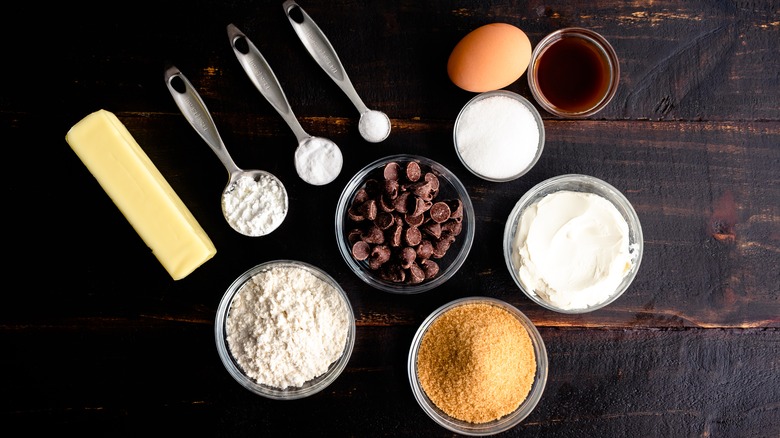The Reason You Shouldn't Use Artificial Vanilla When Baking Cookies
As the saying goes, there's nothing like the real thing. That is just as true for culinary endeavors, where ingredients make, break, or eliminate the earthy, natural flavors that define your food. Real versions of some spices elevate cooking to new levels, infusing recipes with subtle whispers from Mother Nature. For many chefs, vanilla is one of those spices.
Vanilla most often enters baked goods in liquid form, but it's most definitely a spice. In fact, National Geographic calls it the world's second-most-expensive spice after saffron, both of which require extensive labor to bring into your kitchen. The McCormick Science Institute explains that vanilla comes from a climbing-vine plant with orchid flowers that are hand-pollinated before spending months maturing into bean-like pods that harbor thousands of aromatic seeds. The intense vanilla flavor coveted by chefs comes directly from those tiny seeds. But it's a long road from flowering to harvesting just so the pods can spend months drying and curing. And that's before they go through processing, liquid extraction, and delivery to your local grocery store.
All that definitely warrants shelling out extra for those little bottles of real or homemade vanilla extract – but the question is whether you should. Opinions vary on using real versus artificial vanilla in baked goods, including cookies. But there are at least two important reasons for bypassing the synthetic versions.
Artificial vanilla falls flat in cookies
Vanilla in cakes and cookies is a no-brainer. As Better Homes & Gardens notes, it's been incorporated into recipes as far back as the 1600s, and for good reason. It automatically transforms the taste of cookies and other sweet treats with not just its own flavor but also by enhancing the accompanying ingredients. Somewhere along the line, the food industry discovered a way to imitate nature's intricacy, but here's why the flavor typically falls flat.
The first reason is flavor depth and complexity. According to Webstaurant, artificial vanilla has a single flavor compound; so the subtle, nuanced flavors of natural vanilla are nonexistent. With anywhere from 250 to 500 flavor and fragrance components in natural vanilla, estimated by National Geographic, that's a lot to miss out on. One of the primary flavors in real vanilla beans is vanillin, which is easy and inexpensive to synthesize, leading to artificial vanilla products.
Here's the second thing to consider when dashing that artificial liquid into your cookies. It can contain little to no real vanillin and some dubious stand-ins, including petrochemicals (via National Geographic). Scientific American stated in 2016 that roughly 85% of vanillin is synthesized from a petrochemical precursor known as guaiacol. Other artificial vanilla brands use lignin, which is a byproduct of wood pulp and paper processing (via Michigan State University).
You can decide for yourself whether the lower price tag of a vanilla extract substitute is worth the trade-offs in flavor and inclusion of artificial non-food ingredients. For many, there's nothing like the real thing — especially if you love cookies.

